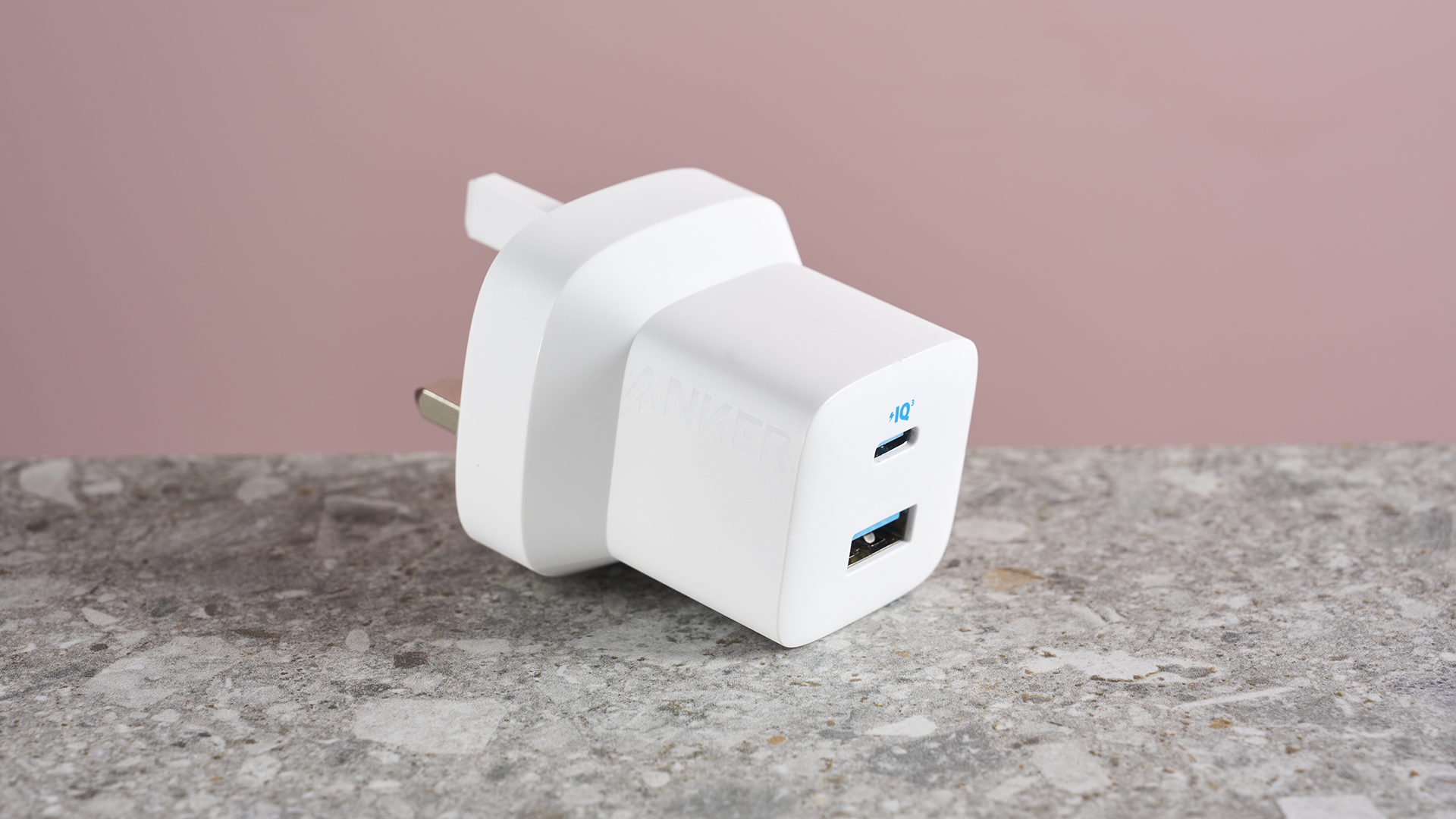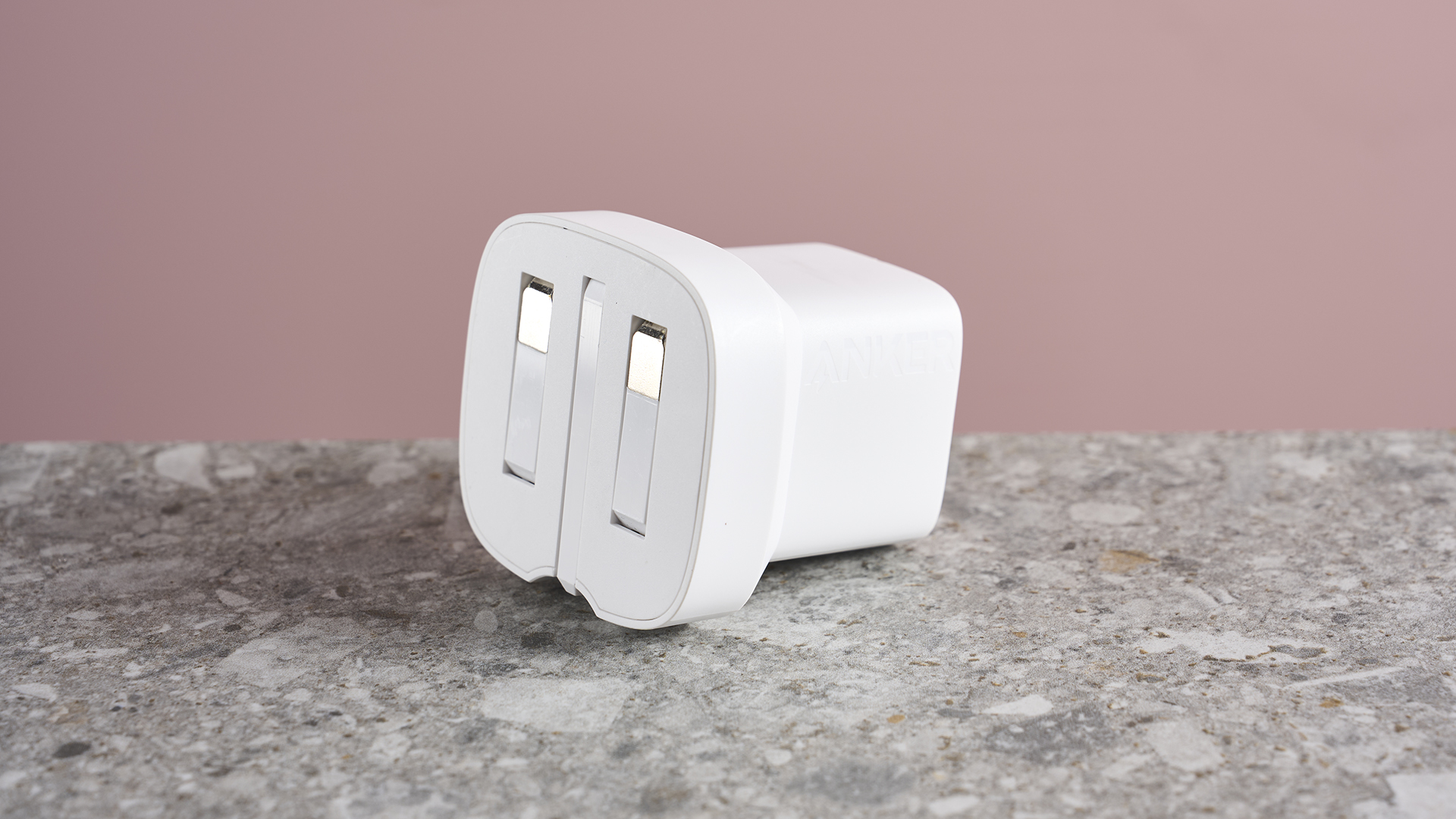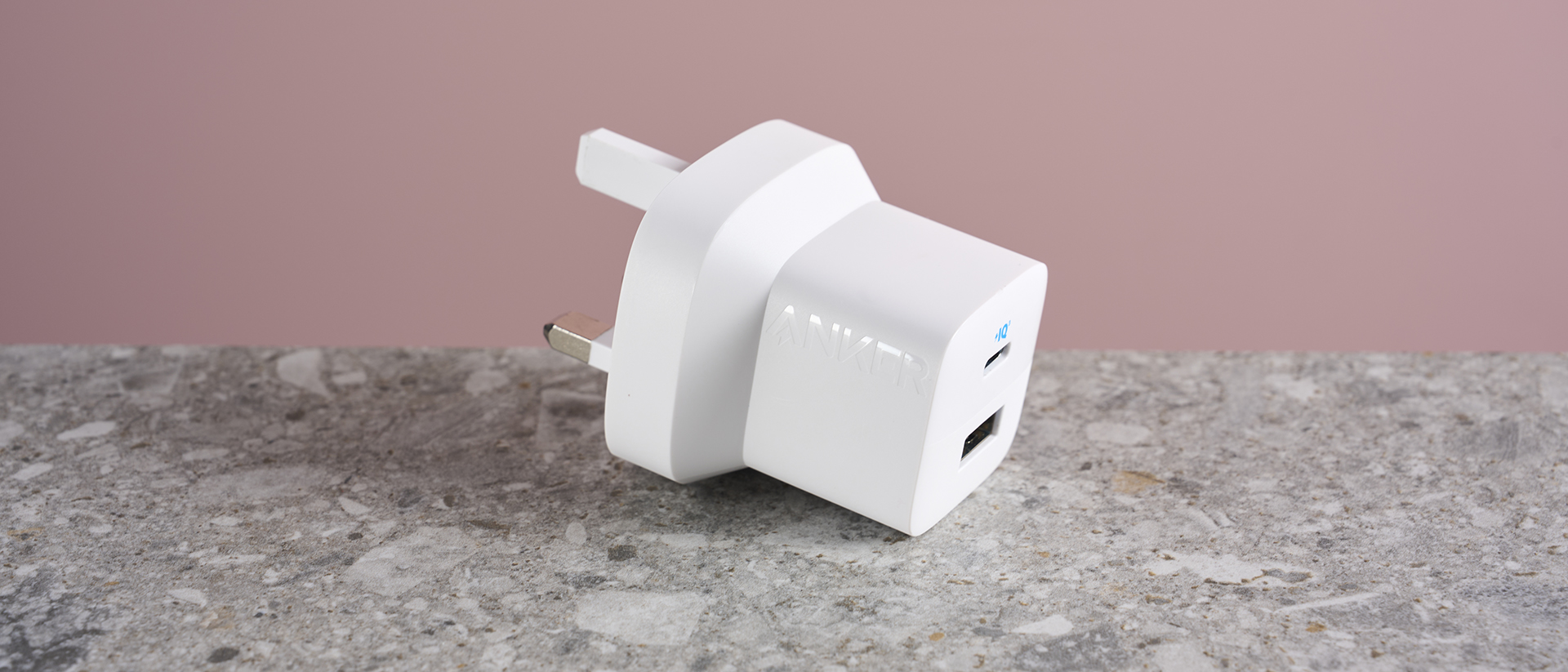TechRadar Verdict
Although it’s not the most powerful wall charger out there, the Anker 323 Charger (33W) is still a perfectly capable dual-port plug. The main attraction here is the versatility of having both a USB-C and USB-A port, although you only get 12W out of the latter. This plug isn’t the prettiest either, although it does have a practical, compact design, meaning that even if it's not a knockout, it's still a charger worth considering.
Pros
- +
Dual-charging
- +
Different port types
- +
Foldable prongs
Cons
- -
Doesn’t deliver tons of power
- -
USB-A port in particular is only 12W
- -
Not the prettiest design
Why you can trust TechRadar
Anker 323 Charger (33W) review
The Anker 323 Charger (33W) is a compact and competent wall charger that can get two devices back to full battery fitness simultaneously.
Unlike some of Anker’s similar chargers, this one has two different port types: one for USB-C; another for USB-A. That gives you some versatility, especially if, like me, you don’t have all too many USB-C to USB-C cables around the house, but plenty USB-A to USB-C ones. That’s also pretty neat given the plug only comes in at $18.79 / £15.99 / AU$49.99 – which is decent value.
Charging two devices works well, too. I tried juicing up my Samsung Galaxy Z Flip 4 via the USB-C port alongside a DualSense Wireless Controller in the USB-A one and was satisfied with the result. My phone went from 0% to 100% in the expected timeframe (around one hour and 30 minutes) even with the USB-A port in use.
The main issue this charger may pose for you is that it’s not the most powerful. When dual charging, the USB-C port has a maximum power output of 20W – which is solid, though may not be enough to get super-fast charging on some of the best Samsung phones, for instance. Meanwhile, you'll get just 12W of power from the USB-A slot in dual-charging mode, which isn’t all too strong – especially compared to some of the best Android phone chargers and best iPhone chargers. It’s common for type A ports to be weaker, sure, but 12W will likely seem underwhelming if you need to revive your phone's battery in a pinch.
Having said that, this charger is capable of supplying 33W of power in single-port mode, which will be plenty for a lot of modern handsets. Of course, there are some exceptions, though. Models including the OnePlus 13 offer incredible 80W wired charging, so if you own that it will be worth turning your attention to a mightier plug like the UGreen Uno Charger 100W.
But that's enough on performance – how does the Anker 323 Charger (33W) fare design-wise? Well, it’s a mixed bag. Firstly, I don’t think this is the most attractive plug on the market. It follows a formula that a few of Anker’s chargers use in housing the charging element in a cube-like block and almost shoehorning the adapter and prongs on the end. As I mentioned in my Anker PowerPort III (20W) review, this isn’t my favorite look.
However, in terms of practicality, the design here is strong. Prongs are foldable, which is great if you want to take this thing for an in-pocket walk. Generally, it’s quite a small plug too making it a nice choice if you’re working with a tight space. On top of that, it uses Anker’s ActiveShield safety standard for preventing overheating.
Overall, then, this may not be the most powerful or pretty plug, but it gets a lot right in terms of practicality, versatility and value. So, if you need a combination of USB-A and USB-C but don’t have the cash to splash on, say, the Anker Prime 100W GaN Wall Charger (3 Ports), this is an option worth considering.

Anker 323 Charger (33W) review: Price & specs
Price | $18.79 / £15.99 / AU$49.99 |
Total power output | 33W |
Number of ports | 2 |
Port type(s) | 1x USB-C; 1x USB-A |
Dimensions | 1.4 × 1.4 × 1.9 inches / 35 × 35 × 48mm |

Should I buy the Anker 323 Charger (33W)?
Buy it if…
You still want to use your USB-A to USB-C/Lightning cable
A lot of handsets in the last few years have come with USB-A to USB-C charging cables, for instance. If you still want to use yours rather than shelling out for another USB-C to USB-C alternative, this is a good option.
You want to charge multiple devices at once
This wall charger is solid value-wise, particularly given that you get two charging ports. The versatility of having both USB-A and USB-C options is pleasing too, but be warned: the USB-A port has a pretty weak maximum power output of 12W.
Don't buy it if…
You want to charge at top speeds
For anyone looking for peak-charging speeds for a new handset, this charger likely won’t cut it. The USB-C port here is the faster of the two, but only has a maximum output of 20W. Phones such as the Apple iPhone 16 Pro Max can charge closer to 30W, so if you want to get juiced up in a flash, look elsewhere.
You want one of the best-looking plugs
This isn’t the most chic wall charger on the market, in my view. The cube-like design, paired with latched-on prongs looks a little unusual compared to a neat cube, like the Anker Nano USB-C Wall Charger (30W), for instance. The 323 Charger (33W) only comes in Black or White too, so if you want a touch of flair design-wise, you’ll likely be unimpressed.
Anker 323 Charger (33W): Also consider
UGreen USB-C 40W
This is another dual-port charger, but it offers a touch more power at a still-solid price-point. OK, both ports are USB-C, so the higher maximum wattage is perhaps unsurprising, but nonetheless, if you’re hoping to revive multiple devices a little faster, this will be better for you. It also has a neater design in my opinion, with a more fluid look than the Anker alternative. You still get foldable prongs and a small build here, so you don’t have to sacrifice on practicality. Read our full UGreen USB-C 40W review.

Harry is a Reviews Staff Writer for TechRadar. He reviews everything from party speakers to wall chargers and has a particular interest in the worlds of audio and gaming. Harry has a background in business tech journalism, particularly around the telecoms industry.
